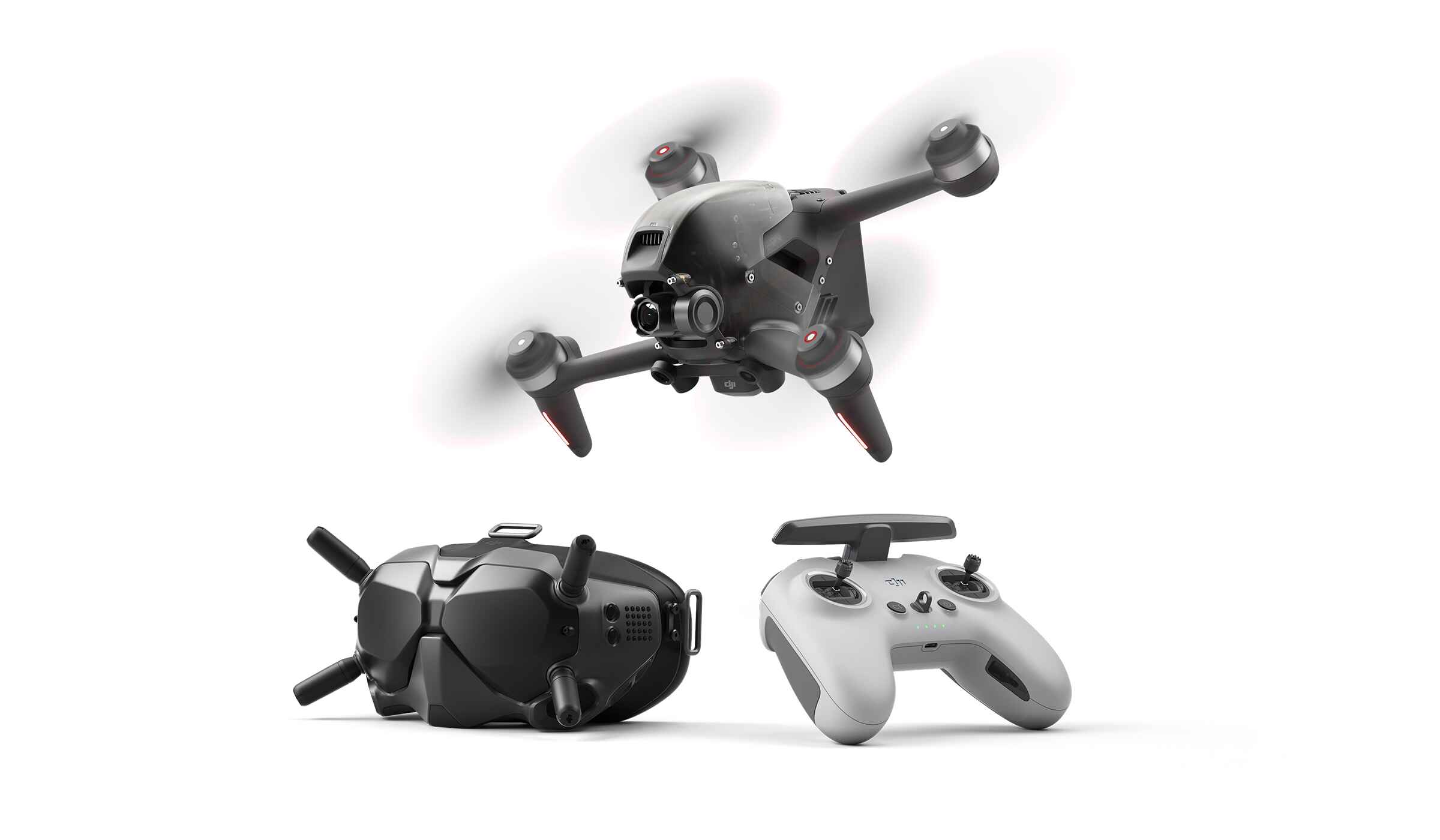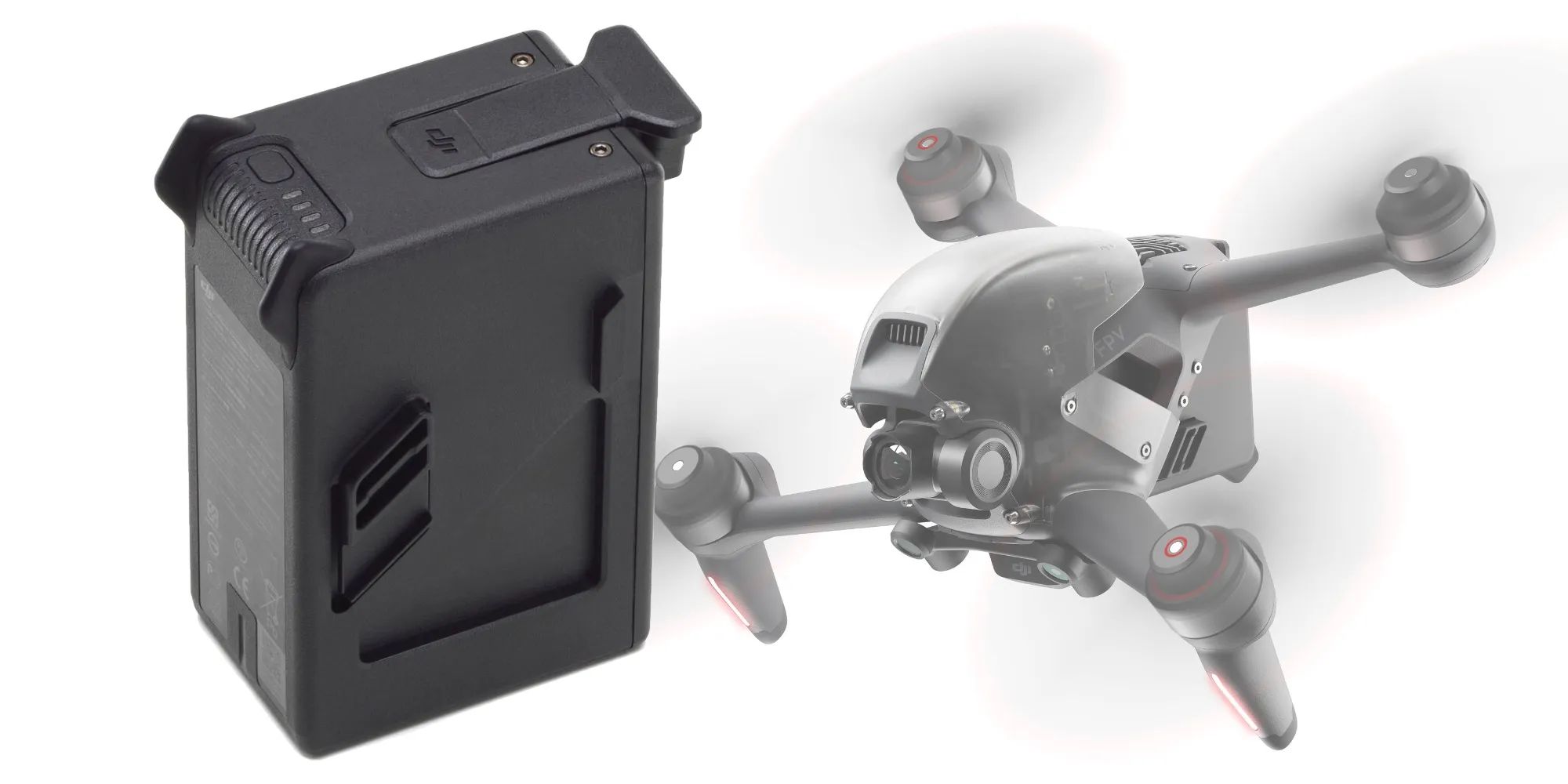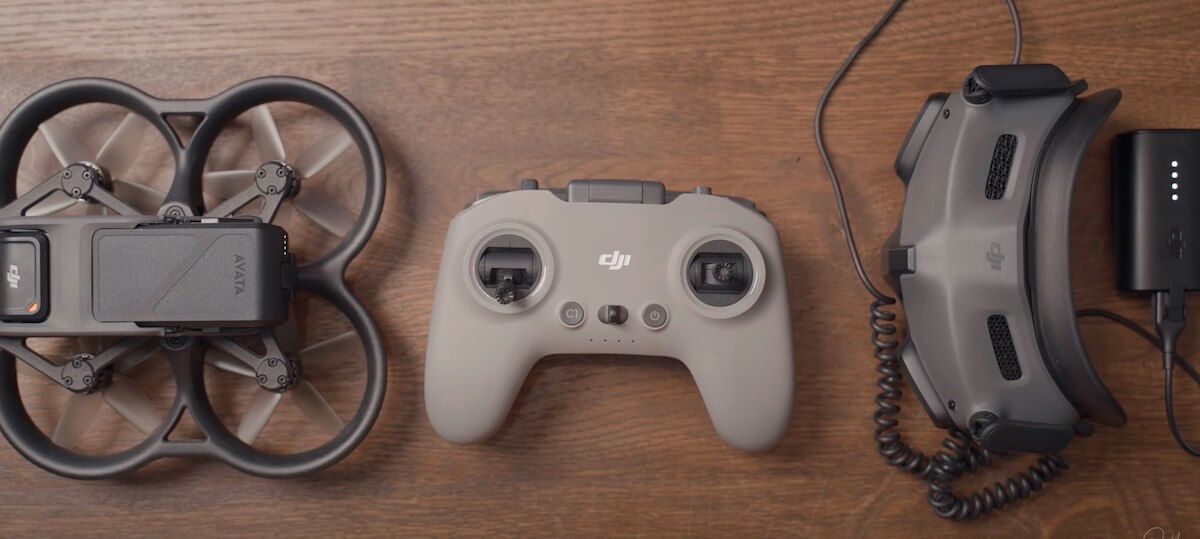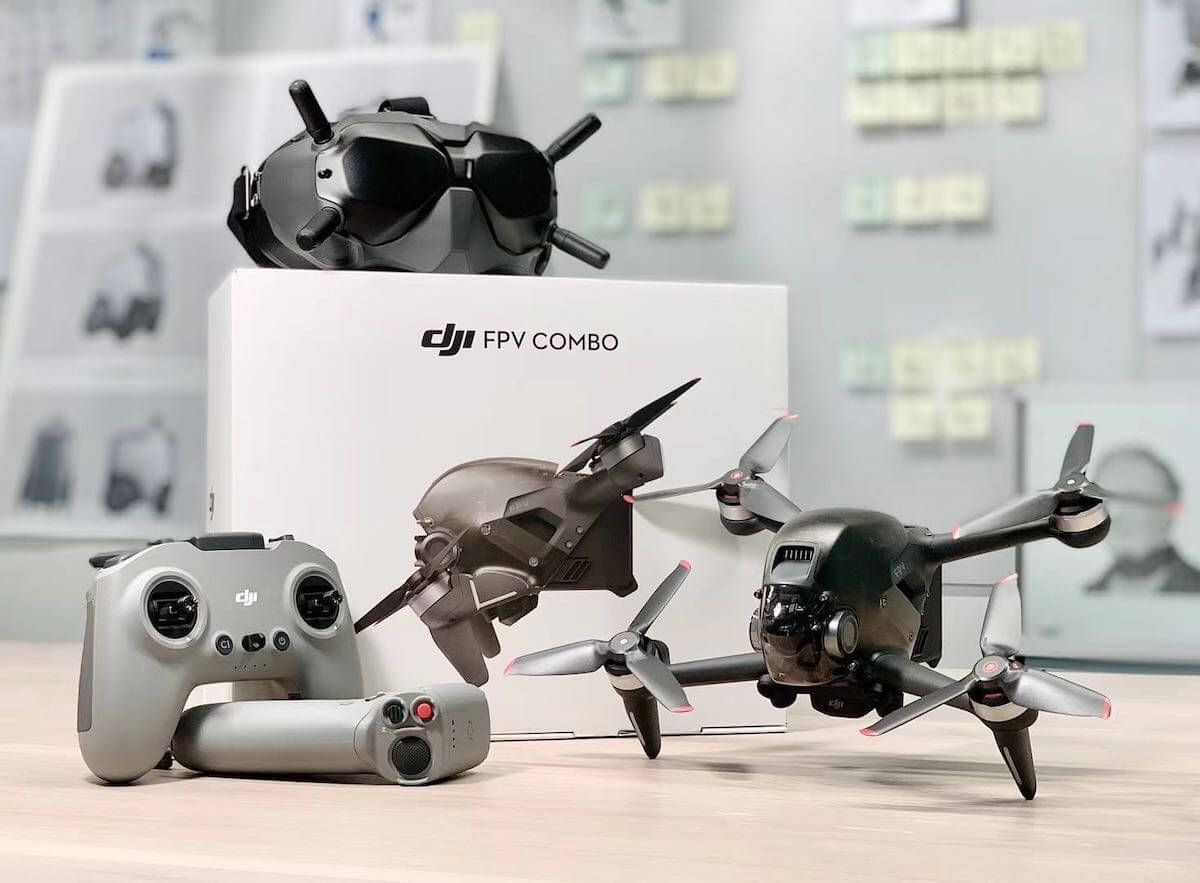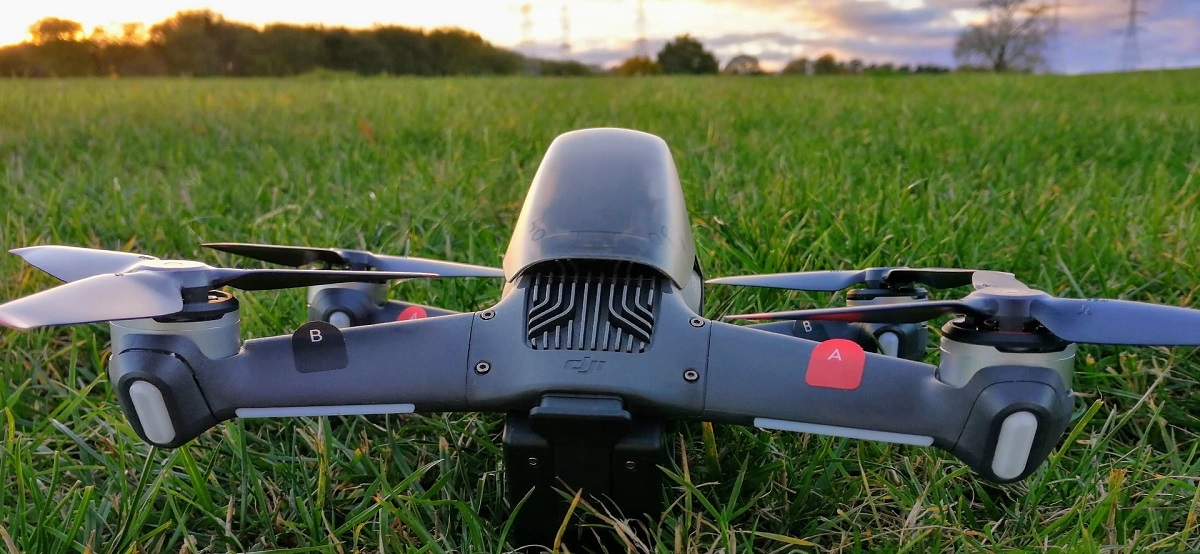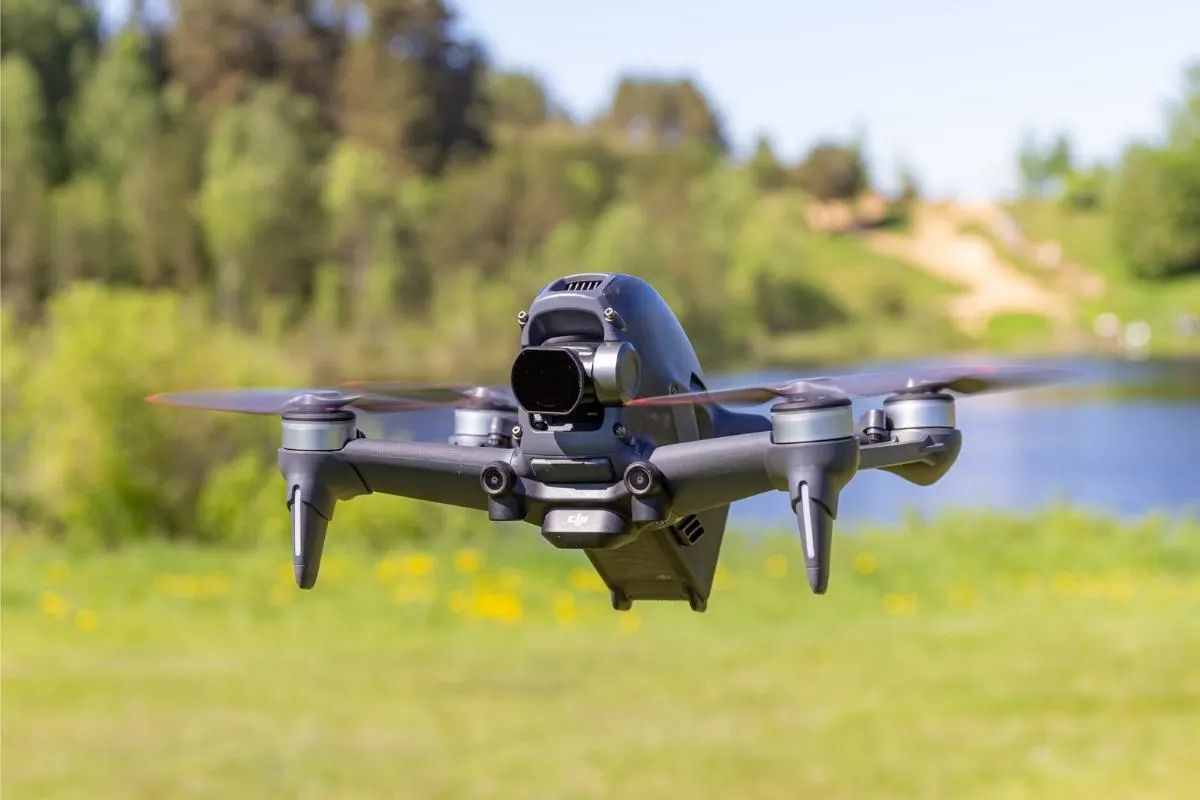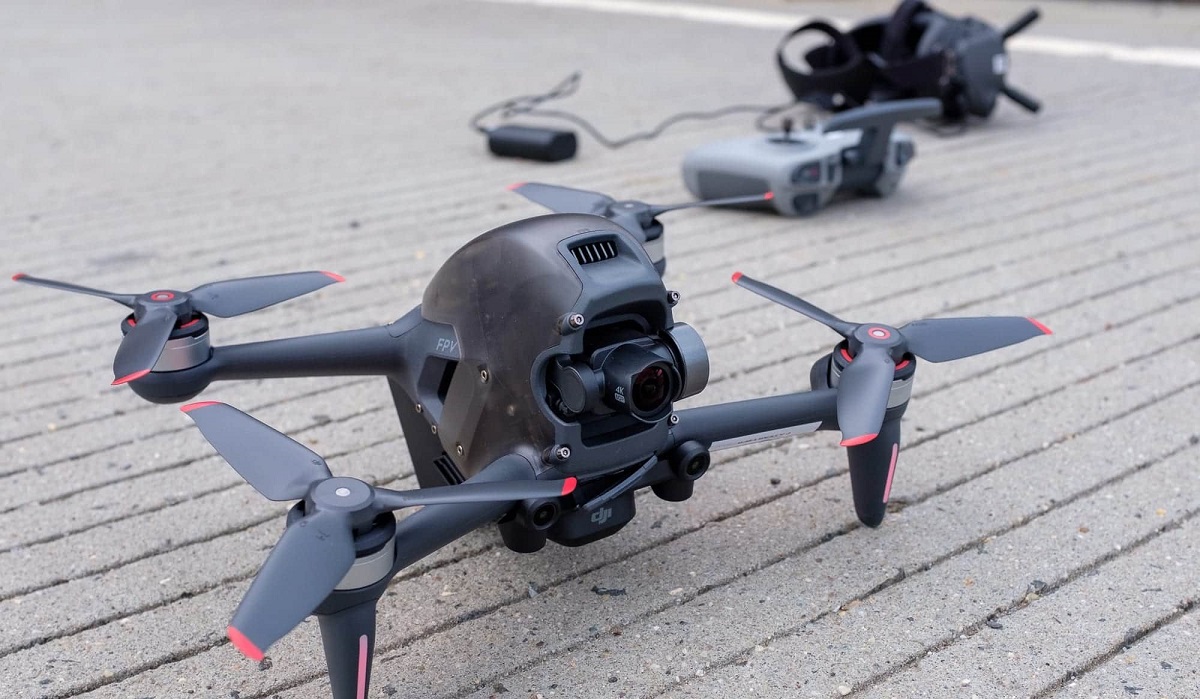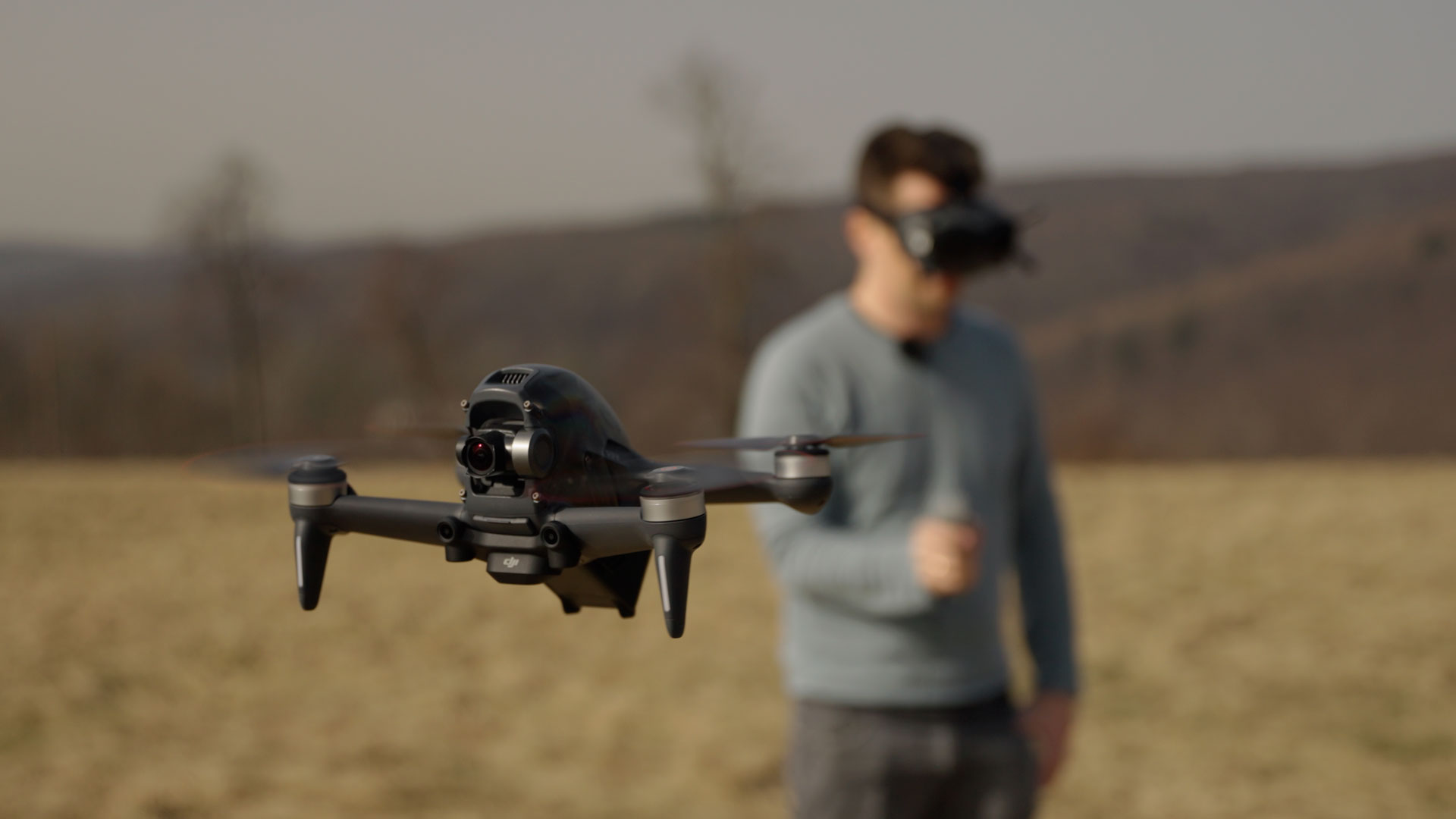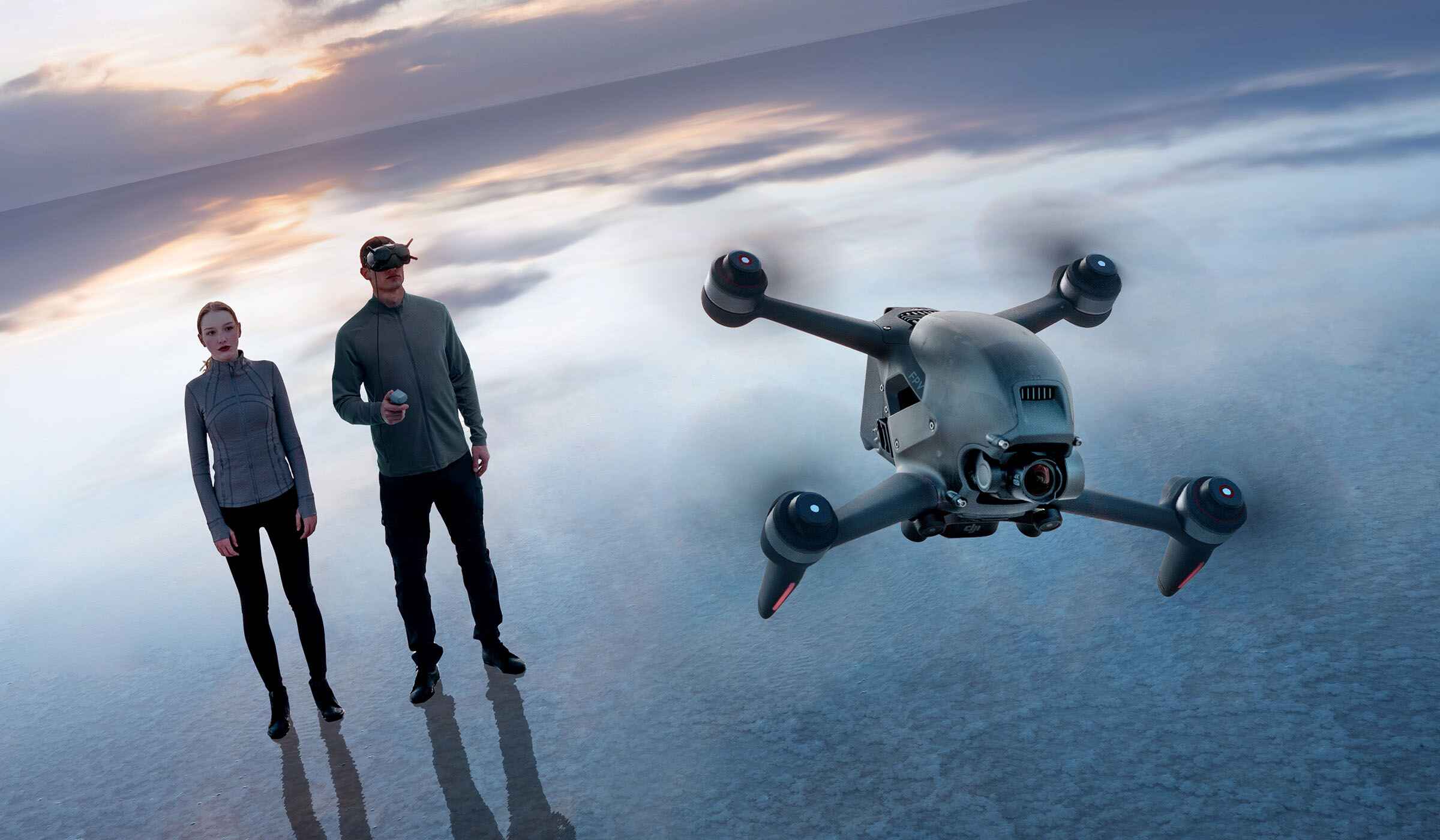Introduction
Welcome to the world of DJI FPV, where adrenaline meets precision. DJI FPV, which stands for First Person View, is a cutting-edge technology that allows users to experience the thrill of flying a drone from a first-person perspective. With its high-speed capabilities and immersive FPV goggles, DJI FPV opens up a whole new realm of possibilities for drone enthusiasts.
One of the key features of DJI FPV is the ability to switch to manual mode, giving pilots full control over their aircraft. Manual mode, also known as acro mode, is a mode where the drone relies solely on the pilot’s inputs, offering a more dynamic and challenging flying experience. In this article, we will guide you through the process of activating manual mode on your DJI FPV drone and provide tips for mastering your manual flight skills.
Whether you are a seasoned pilot looking to push the boundaries of flight or a beginner eager to take your skills to the next level, manual mode offers a thrilling and rewarding experience. So, strap on your FPV goggles, power up your DJI FPV drone, and get ready to unlock the full potential of your flying abilities!
What is DJI FPV?
DJI FPV, or First Person View, is a revolutionary drone technology developed by DJI, a leading manufacturer of consumer and professional drones. Unlike traditional drones that are flown using a remote controller, DJI FPV takes the experience to a whole new level by offering a first-person perspective, just like the view from inside the cockpit of an aircraft.
What sets DJI FPV apart is its immersive flying experience. Equipped with FPV goggles, pilots can see a live video feed from the drone’s camera, giving them a real-time, high-definition view of the world from above. This level of immersion allows pilots to feel as if they are soaring through the skies, experiencing the thrill and excitement of flight like never before.
DJI FPV drones are designed with performance and agility in mind. They are built to be fast, responsive, and capable of performing acrobatic maneuvers. With powerful motors and advanced flight control systems, DJI FPV drones can reach impressive speeds and execute flips, rolls, and loops with ease.
In addition to its exhilarating flying capabilities, DJI FPV also offers advanced safety features to ensure a secure and controlled flight experience. These include obstacle detection and avoidance systems, GPS stabilization, and fail-safe mechanisms that bring the drone back to its takeoff point in the event of signal loss or low battery.
Whether you are a professional aerial photographer, an aspiring freestyle pilot, or simply someone who seeks a thrilling flying experience, DJI FPV is a game-changer in the drone industry. It combines the excitement of FPV racing with the ease of use and reliability of DJI’s renowned drone technology, making it accessible to both experienced pilots and newcomers alike.
What is Manual Mode and Why Use It?
Manual mode, also known as acro mode, is a flight mode available on DJI FPV drones that gives pilots full control over the aircraft’s movements. Unlike other flight modes that have automated stabilization and flight assistance features, manual mode allows pilots to have direct and precise control over every aspect of the drone’s flight.
When operating in manual mode, the DJI FPV drone responds directly to the pilot’s inputs without any flight assistance or stabilization algorithms. This means that the drone will not automatically level itself or maintain a stable hover. Instead, every movement and maneuver is solely dependent on the pilot’s skill and control inputs.
So, why should you use manual mode? The answer is simple: freedom and creativity. Manual mode provides a more dynamic and challenging flying experience that allows pilots to push the limits and explore their flying skills. It offers a higher degree of control and responsiveness, enabling pilots to execute precise maneuvers, perform aerobatics, and fly with a greater sense of freedom.
By using manual mode, pilots can unleash their creativity and capture unique shots and footage that may not be possible in other flight modes. Whether it’s capturing cinematic flyby shots, executing close proximity maneuvers, or navigating through tight spaces, manual mode gives pilots the freedom to experiment and create stunning aerial content.
Another reason to use manual mode is for racing and freestyle flying. Many FPV pilots enjoy the thrill of high-speed racing and performing jaw-dropping tricks and flips. Manual mode allows pilots to maximize the performance and agility of their DJI FPV drones, enabling them to race against other pilots, navigate challenging courses, and showcase their freestyle skills.
However, it’s worth noting that flying in manual mode requires a higher level of skill and experience compared to other flight modes. It is recommended to have a good understanding of drone flight dynamics and control inputs before venturing into manual mode. Practice and familiarize yourself with the drone’s responsiveness and handling characteristics in a safe and open area before attempting more advanced maneuvers.
In summary, manual mode on DJI FPV drones offers a thrilling and challenging flying experience that allows pilots to have full control over their aircraft. It provides the freedom to unleash creativity, capture unique shots, and push the boundaries of flight. Whether you’re an aerial filmmaker, a freestyle enthusiast, or simply seeking a more immersive and exhilarating flying experience, manual mode is worth exploring with your DJI FPV drone.
Step 1: Toggle to Manual Mode
Activating manual mode on your DJI FPV drone is a straightforward process. To switch to manual mode, follow these simple steps:
- Make sure your DJI FPV drone is powered on and connected to the controller.
- Launch the DJI Fly app on your mobile device and connect to your drone.
- In the app, navigate to the flight mode settings. This can usually be accessed by tapping on the flight mode icon or accessing the settings menu.
- Select the manual mode option from the available flight modes. This is typically represented by a joystick icon or labeled as “manual” or “acro”.
- Confirm your selection to switch to manual mode.
Once you have successfully toggled to manual mode, your DJI FPV drone is now ready for full manual control.
It’s important to note that manual mode disables some of the automated features and flight assistance systems provided by other flight modes. This means that you will have complete control over the drone’s movements, including pitch, roll, and yaw. However, it also means that you will need to actively stabilize and control the aircraft to maintain level flight.
Before jumping into complex maneuvers and high-speed flights, it is recommended to start with simple and basic movements to get accustomed to the handling in manual mode. Take the time to practice flying in manual mode and become familiar with the drone’s responsiveness and maneuverability.
Remember, always fly in a safe and open area, away from any obstacles or people, when practicing in manual mode. Gradually build your flying skills and confidence before attempting more challenging maneuvers and aerial acrobatics.
Now that you have successfully enabled manual mode on your DJI FPV drone, let’s move on to the next step and learn how to adjust the flight parameters to optimize your manual flying experience.
Step 2: Adjusting the Flight Parameters
After toggling to manual mode on your DJI FPV drone, it’s essential to adjust the flight parameters to optimize your flying experience. These parameters can be customized to suit your flying style and preferences. Here are some key flight parameters to consider:
- Rate Mode: Rate mode determines how fast the drone responds to your control inputs. You can adjust the rate mode to make the drone more or less sensitive to your movements. Experiment with different rate settings to find the sweet spot that matches your flying style.
- Expo: Expo, short for exponential, controls the stick sensitivity near the center position. Lower expo values make the drone more responsive around the center, while higher expo values make it less sensitive. Adjusting expo can help fine-tune the precision of your control inputs.
- RC Rates: RC rates determine the maximum deflection of the drone’s control surfaces or motor speeds. Higher rates result in more aggressive maneuvers, while lower rates offer smoother and more gradual movements. Customize your RC rates based on your comfort level and desired flight characteristics.
- Throttle Curve: Throttle curve settings allow you to adjust the response of the drone’s motors to your throttle inputs. Fine-tuning the throttle curve can help achieve better control and more precise throttle management, especially during rapid acceleration or deceleration.
- Filtering: Filtering settings affect the stability and smoothness of the drone’s flight. Higher filtering values can reduce vibrations and oscillations but may also introduce some latency. Lower filtering values can provide more responsiveness but may lead to increased noise in the footage. Finding the right balance is crucial for optimal flight performance.
To adjust these flight parameters, you will need to access the DJI FPV drone’s settings through the DJI Fly app. The specific process for adjusting the parameters may vary depending on the software version and firmware of your drone. Refer to the user manual or DJI’s official documentation for detailed instructions on accessing and customizing the flight parameters.
It is recommended to make small incremental adjustments to the flight parameters and test how they affect the drone’s performance. Take note of how the changes impact your flying experience and make further adjustments accordingly. Remember, finding the perfect combination of flight parameters might take some trial and error, so be patient and experiment until you achieve the desired flight characteristics.
Once you have fine-tuned the flight parameters to your liking, you are ready to take to the skies and explore the exciting possibilities of flying in manual mode with your DJI FPV drone.
Step 3: Practice Flying in Manual Mode
Now that you have toggled to manual mode and adjusted the flight parameters, it’s time to get hands-on experience and practice flying your DJI FPV drone in manual mode. Here are some tips to help you make the most out of your practice sessions:
- Start with basic maneuvers: Begin by practicing simple movements like hovering, ascending, descending, and flying in straight lines. Familiarize yourself with the throttle control, pitch, roll, and yaw movements in manual mode.
- Master control inputs: Focus on smooth and precise control inputs. Pay attention to how slight adjustments in the stick movements affect the drone’s response. Maintain a gentle touch on the controls to avoid abrupt movements.
- Practice hovering and stabilization: Since manual mode disables the automatic stabilization features, it’s crucial to practice manual stabilization. Learn how to maintain a stable hover by making small adjustments to the controls. This will help you control the drone precisely during shots and maneuvers.
- Experiment with different speeds: Explore the full range of speeds your DJI FPV drone can achieve in manual mode. Start with low-speed flights and gradually increase the throttle to experience higher speeds. This will allow you to become familiar with the drone’s handling characteristics at different velocities.
- Gradually build up to advanced maneuvers: Once you gain confidence and proficiency flying in manual mode, you can start incorporating more advanced maneuvers into your practice sessions. Experiment with flips, rolls, and other aerial acrobatics that showcase the agility and performance of your DJI FPV drone.
- Practice in open areas: Always ensure that you have plenty of space to maneuver and minimize the risk of collisions. Fly in open areas away from obstacles, trees, buildings, and people. This will give you more freedom to explore different flight patterns and reduce the chances of accidents.
Remember, practicing regularly is the key to honing your flying skills in manual mode. The more you practice, the more comfortable and confident you will become in controlling your DJI FPV drone in this mode.
Take the time to review your flight footage and analyze your flights to identify areas for improvement. Consider seeking feedback from experienced FPV pilots or joining online communities where you can share your experiences and learn from others.
Lastly, always prioritize safety when practicing in manual mode. Ensure that you comply with local drone regulations, maintain line of sight with your drone, and fly in appropriate weather conditions. Safety should always be your top priority to ensure an enjoyable and incident-free flying experience.
By dedicating time and effort to practice flying in manual mode, you will unlock the full potential of your DJI FPV drone and take your piloting skills to new heights.
Tips for Flying in Manual Mode
Flying in manual mode with your DJI FPV drone can be an exhilarating experience. To help you make the most out of your flights and improve your skills, here are some valuable tips to keep in mind:
- Practice in a controlled environment: Start by flying in open areas with minimal obstacles. This will give you more space to practice maneuvers and reduce the risk of collisions.
- Master throttle control: Throttle control is crucial in manual mode. Practice smooth and gradual adjustments to maintain stable flights and prevent sudden speed changes.
- Focus on stick movements: Pay close attention to your control stick movements. Use small, precise inputs to maintain control and minimize overshooting your intended flight path.
- Use small control inputs: Small control inputs are essential for precise and controlled flight. Avoid harsh movements or exaggerated stick inputs, as they can lead to loss of control.
- Be mindful of wind conditions: Flying in manual mode requires more control and stability. Take wind conditions into account, as they can affect the drone’s flight characteristics and stability.
- Practice hand-eye coordination: Manual mode relies heavily on hand-eye coordination. Practice coordinating your inputs with the drone’s movements to perform smooth and accurate maneuvers.
- Start with simple maneuvers: Begin with basic maneuvers, such as figure-eight flights, loops, and banked turns. As you become more confident, gradually progress to more complex acrobatic maneuvers.
- Learn from experienced pilots: Join online communities or attend FPV events to connect with experienced pilots. Learn from their tips and techniques to improve your flying skills.
- Review and analyze your flights: Take the time to review your flight footage and analyze your flights. Look for areas of improvement and areas where you can push your skills further.
- Stay up to date with firmware updates: DJI frequently releases firmware updates that may include updates and improvements to manual mode. Stay updated and take advantage of any enhancements to enhance your flying experience.
Remember, practice makes perfect. Take the time to practice consistently and gradually challenge yourself with new maneuvers and techniques. Flying in manual mode requires patience, skill, and practice, but the reward of mastering this mode is well worth the effort.
Finally, always prioritize safety and adhere to local regulations when flying in manual mode. Respect the privacy of others, fly in appropriate areas, and be aware of any restrictions or limitations in your location.
With these tips in mind, you can elevate your manual flying skills and take your DJI FPV drone to new heights of excitement and creativity.
Benefits and Limitations of Manual Mode
Using manual mode on your DJI FPV drone comes with a range of benefits and limitations. Understanding these can help you make an informed decision about whether manual mode is the right choice for your flying needs. Let’s explore the advantages and limitations of manual mode:
Benefits of Manual Mode:
- Greater control: Manual mode gives you full control over every aspect of the drone’s flight. This allows for more precise movements, making it ideal for capturing cinematic shots and executing complex maneuvers.
- Enhanced creativity: With manual mode, you have the freedom to explore your creativity and capture unique shots that may not be possible in other flight modes. Whether it’s flying through tight spaces or executing intricate aerial acrobatics, the possibilities are endless.
- Improved flight skills: Flying in manual mode helps you develop and refine your flight skills. It challenges you to become a more skilled pilot as you learn to adjust to the drone’s responsiveness and master advanced flying techniques.
- Optimized performance: Manual mode allows you to maximize the capabilities of your DJI FPV drone. By disabling automated stabilization and flight assistance features, you can take full advantage of the drone’s speed, agility, and responsiveness.
- FPV racing and freestyle: Manual mode is a must-have for FPV racing enthusiasts and freestyle pilots. It enables you to push the limits, compete with other pilots, and showcase your flying skills through dynamic and thrilling maneuvers.
Limitations of Manual Mode:
- Higher skill requirement: Flying in manual mode requires a higher level of skill and experience compared to other flight modes. It may take time and practice to become comfortable with the controls and handle the drone confidently.
- Lack of automated assistance: In manual mode, you won’t have the assistance of automated stabilization or flight modes. This means that you have to actively stabilize the drone and maintain control throughout the flight.
- Increased risk of crashes: Manual mode puts the onus on the pilot to ensure stable flight. Any mistakes or errors in control inputs can lead to crashes or mishaps, so caution and focus are crucial while flying in this mode.
- Not recommended for beginners: If you’re new to flying or still building your piloting skills, it’s generally advised to start with other flight modes before transitioning to manual mode. Familiarize yourself with the basics of drone flight first before delving into full manual control.
- Reduced stability in turbulent conditions: Without automated flight assistance, manual mode may be more challenging to control in windy or turbulent conditions. It’s important to be aware of weather conditions and exercise caution when flying in adverse weather.
Understanding the benefits and limitations of manual mode can help you make an informed decision about whether to use this mode for your flying endeavors. Consider your skill level, flying goals, and comfort with manual control to determine if manual mode is the right fit for you.
Remember, regardless of the flight mode you choose, always prioritize safety, follow local regulations, and practice responsible drone operation to ensure a safe and enjoyable flying experience.
Conclusion
Using manual mode on your DJI FPV drone can open up a whole new world of exciting and challenging flying experiences. With full control over your aircraft, you can unleash your creativity, push the limits of your flying skills, and capture breathtaking footage.
Throughout this guide, we’ve covered the basics of activating manual mode, adjusting flight parameters, and provided tips for practicing and mastering your flying abilities. By following these steps and practicing regularly, you can become a skilled pilot capable of executing precise maneuvers and capturing stunning shots.
However, it’s crucial to heed the limitations of manual mode and exercise caution when flying. Keep in mind that manual mode requires higher skill and experience levels, and it’s not recommended for beginners. Prioritize safety, be aware of your surroundings, and always abide by local drone regulations.
Remember to take advantage of the online drone community, where you can connect with experienced pilots, gain insights, and share your own experiences. Learning from others and continuous practice will help you improve your manual flying skills and unlock the full potential of your DJI FPV drone.
So, whether you’re an aspiring FPV racer, a creative aerial filmmaker, or simply seeking an exhilarating flying experience, explore the possibilities of manual mode with your DJI FPV drone. Embrace the freedom, control, and excitement that comes with piloting your drone in manual mode, and soar to new heights in the world of FPV flying!







